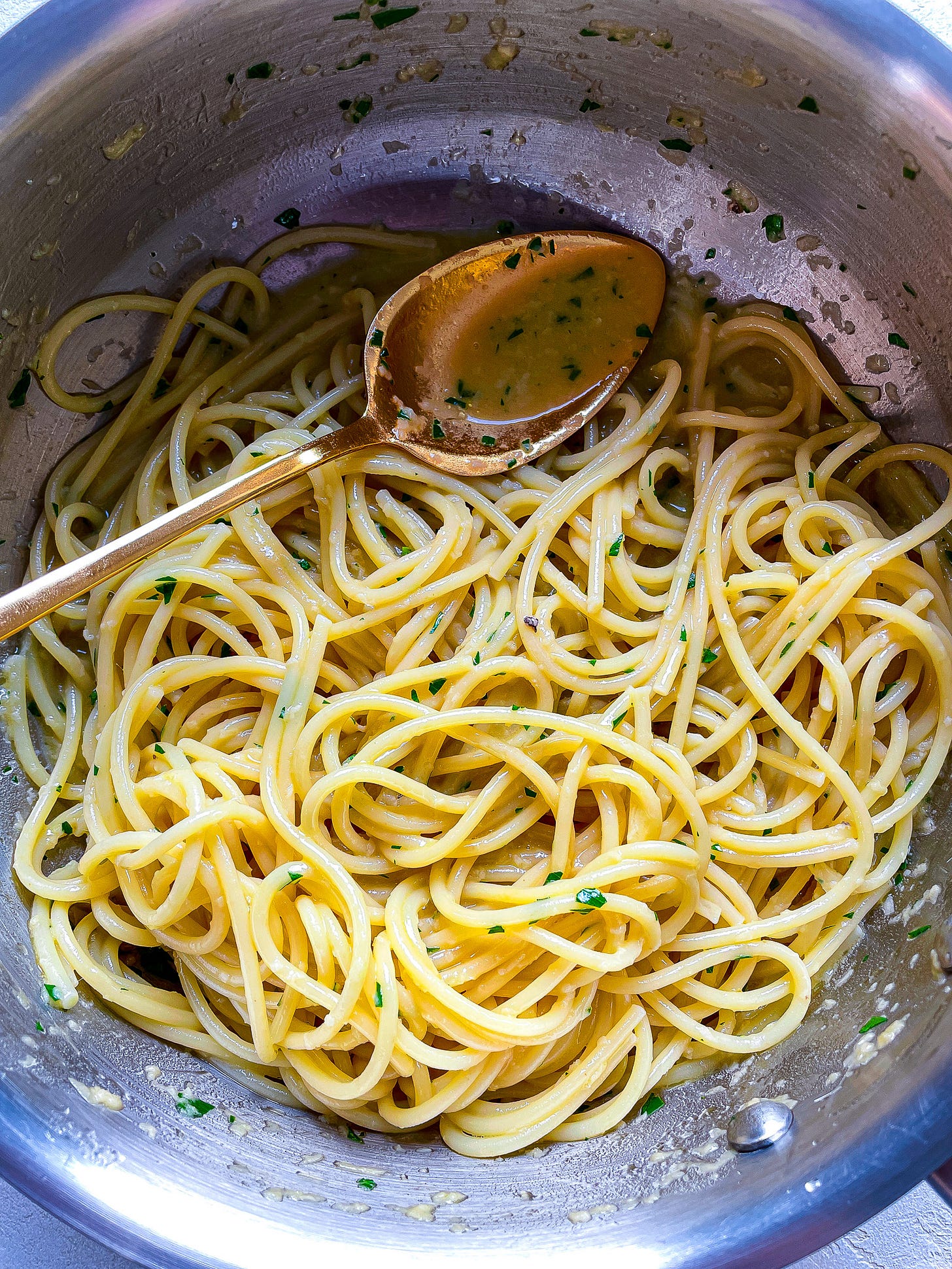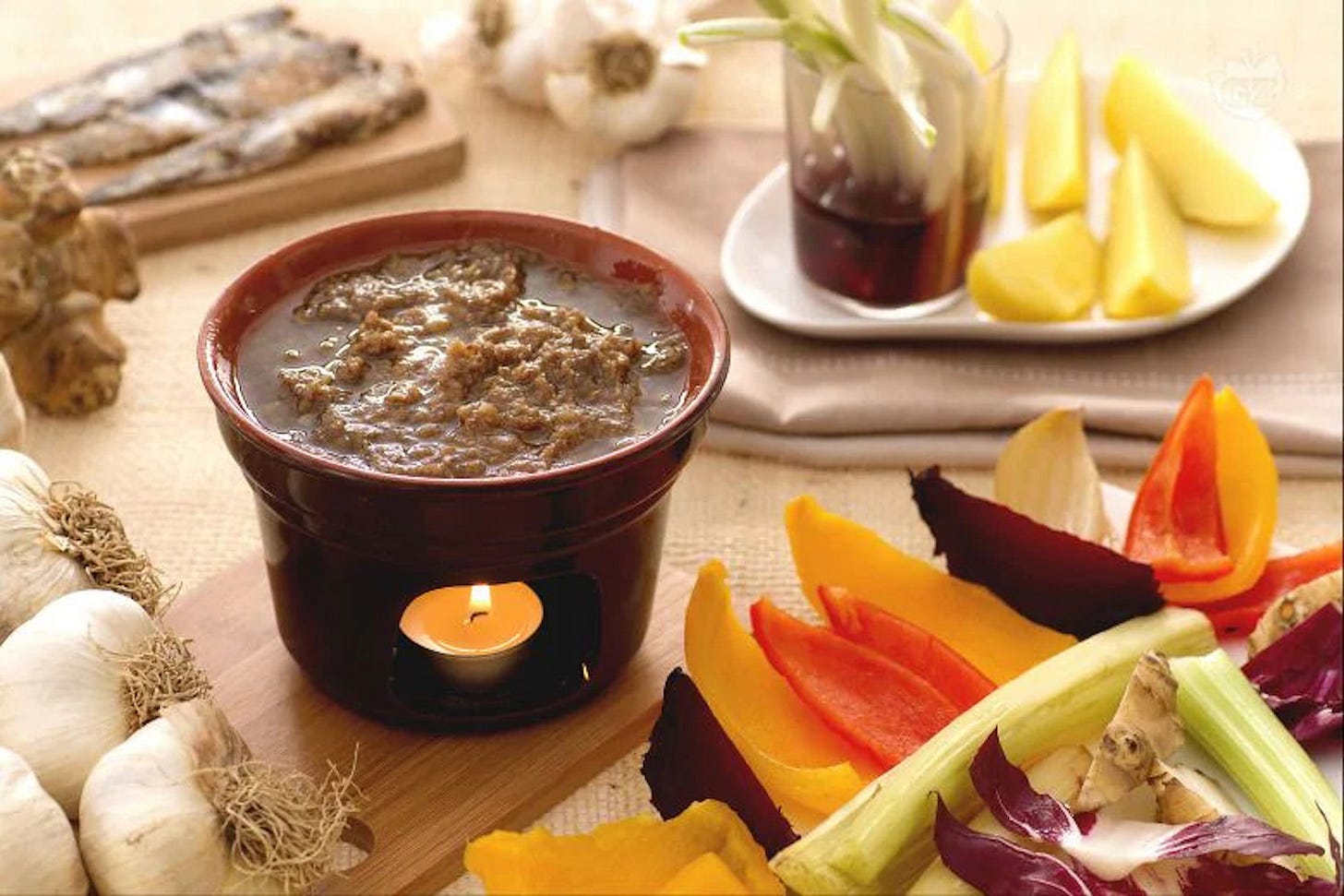I’m an introvert. And yet, like so many of my less-sociable kin, I’ve made a living as an extrovert. This is, of course, a very good thing, since “putting myself out there” over the years has gotten me pretty far. But, true to my nature, this also means that promoting a cookbook has been harder (on my anxiety, fear of failure, general energy levels) than writing one. To help me recharge, I’ve been relying on food that’s effortless yet craveable, food that’s easy to make and still soothes the soul. Food like this garlic and anchovy pasta.
Most of the time, my recipe development leads to plenty of leftovers for neighbors or the freezer. Not this time. I first made this dish in August, both to get ahead on fall recipes when I knew I’d be busiest, and, more selfishly, to have a go-to dinner in my back pocket for the late nights I knew were coming. I ate half of it standing up over the pan. My husband demolished the other half standing up in its Tupperware container. “This has to be a traditional Italian recipe somewhere,” he said. (Is it? I haven’t found it yet!) I’ll take that as the highest compliment, because traditional Italian fare is the epitome of simple and extremely, unequivocally delicious.
Although this particular recipe might not be traditional, the inspiration behind it is. I originally wanted to create a dish inspired by bagna càuda, a “hot sauce” of garlic and anchovies from Piedmont. Bagna càuda is such a special dish that the delegation of Asti registered its official recipe with the Accademia Italiana della Cucina in 2005. This official version, which serves 12 people, consists of the following: 12 heads of garlic (because one per person is doing life right); 600 grams salt-packed anchovies (which are cleaned and soaked in red wine); and lots and lots (1.2 liters) of extra-virgin olive oil (or a combination of olive and walnut oils). Occasionally a final pat of butter is added for a richer result. The garlic and anchovies are cooked low and slow in an earthenware vessel (usually terra cotta), then served warm atop a votive candle and alongside veggies and bread for dipping. Who needs fondue when you have a bubbling hot bath of garlic and anchovies?
Piedmont is a northwestern region of Italy embraced by the Alps and known for sumptuous cheeses, butter, truffles, and plenty of other cold-weather treats. It’s also landlocked, which makes such an abundance of anchovies in Piedmontese cuisine—in this sauce, but also local versions of salsa verde and tonnato, a mayonnaise-like tuna sauce (I’m not doing it justice; tonnato is incredible)—a little surprising. What’s less surprising is that there’s a story behind it, and that story has to do with taxes. Salt was, for centuries, a valuable commodity, and one that needed to be imported to landlocked Piedmont. To avoid the heavy salt tax, clever merchants would hide their salt supplies under layers of anchovies. Although these anchovies were eschewed by the rich, they were embraced by the poor, and what was once a coverup became a staple ingredient in Piedmontese cuisine. Bagna càuda itself has murky origins: It might have been created to celebrate the grape harvest, or used as payment to harvest laborers (hence soaking the anchovies in wine), or perhaps it’s a local adaption of anchoïade, a similar dish from Provence. Either way, it’s now inextricable from the region’s cooking.
Back to the pasta. As you might expect, this one is punchy: Not only are we using equal parts garlic and anchovies, but we’re not waiting around for any low-and-slow cooking to soften the blow. Instead, I’ve mellowed the flavors with butter and acid, a quick spritz of lemon juice that offsets the salt and pulls it all together. A sprinkle of parsley adds color and freshness, but isn’t necessary if you can’t be bothered to chop herbs. Finally, I opted for half of a box of spaghetti, a late-night eater’s reliable companion, but feel free to use any noodle you wish.
Easiest Garlic & Anchovy Pasta
Serves 2






